
How to land multiple change initiatives – ACMP presentation slides
How to land multiple change initiatives - ACMP presentation slides
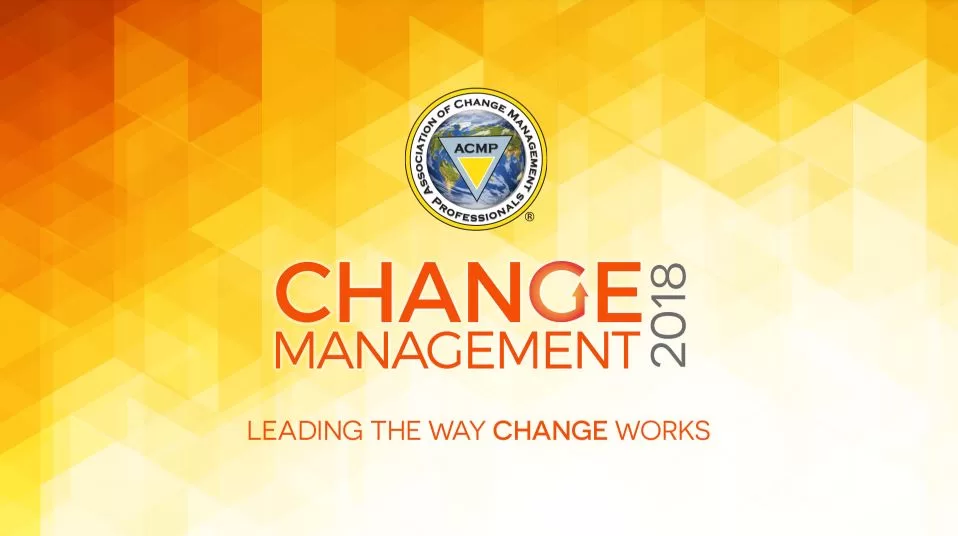




These are slides from the presentation to the ACMP (Association of Change Management Professionals) Conference in Las Vegas.
The change analogy was used to help change professionals explain the various components and facets of managing a portfolio of change initiatives.

In the ever-evolving landscape of project management and software development, Agile has transcended its origins and become a versatile approach applied not only in software development but also in project and operations management. As Agile gains popularity, change practitioners are increasingly aligning their strategies to support Agile environments. This article explores the fundamental principles of Agile and how they dovetail with change management, highlighting the valuable lessons we can draw from Agile’s evolution.
Agile’s Expansion Beyond Software Development
Agile, initially conceived for software development, has expanded its horizons to encompass project management and operations. The principles that underpin Agile, outlined in the Agile Manifesto, have become a guiding light for many across various industries. With methodologies like Scrum, Kanban, and Refactoring, Agile can be applied at different levels, from project teams to program and portfolio management.
Having personally gone through the Scaled Agile certification process, I was struck by how many fundamental change management principles are deeply embedded within Agile. In my multi-day training course, case studies, and examination, I realized that many concepts that are considered common sense in change management are sometimes perceived as ‘new’ for technical leads or project managers in an Agile context. Agile inherently incorporates principles that change managers have advocated for a long time.
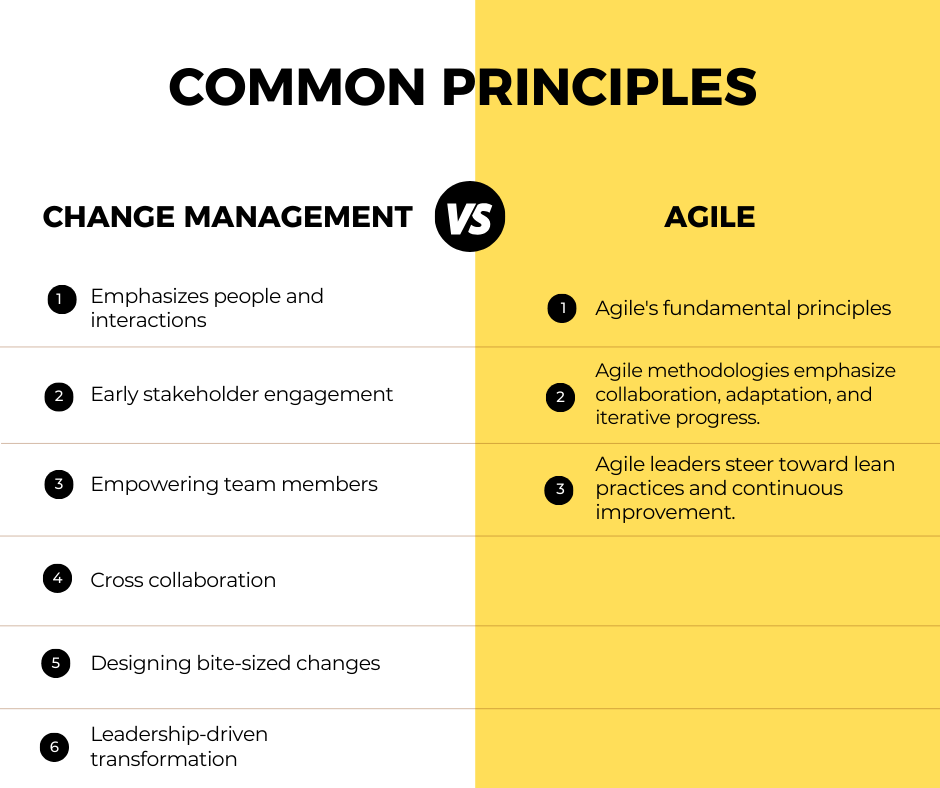
1. Individual Interactions Over Processes and Tools
In technology-driven environments, technical professionals are highly regarded for their problem-solving skills. The typical response to issues or improvement opportunities is to seek technical solutions. However, the Agile Manifesto focuses on people and interactions. It stresses that teams perform at their best when they maintain constant interaction to ensure effective communication, clarity, and understanding of the work at hand. For instance, a study by McKinsey found that projects with strong team interactions deliver on their objectives 95% of the time, while those lacking strong collaboration only succeed 50% of the time. This principle resonates strongly with change managers, who have consistently advocated for a focus on people and behaviors as central to change management success.
2. Early Involvement of Stakeholders
Agile projects move swiftly, making it crucial to involve stakeholders early in the project development lifecycle. Early engagement ensures clear alignment, fosters relationships among team members, and helps draw out assumptions and set expectations. For example, a survey conducted by Prosci revealed that projects involving early stakeholder engagement had a 74% success rate, compared to only 31% for projects that did not engage stakeholders early. This aligns with change management practices, which emphasize engaging stakeholders early to secure buy-in and alignment. Beyond formal communication, it encourages open dialogue and the testing of assumptions for early clarity across the project team.
3. Empowering Team Members
Traditionally, project managers held the reins in decision-making across all aspects of a project, including solution features and task allocation. Agile challenges this command-and-control model by empowering teams to make these decisions. Effective Agile teams are often self-organized, with project managers transitioning to coaching and enabling roles. For example, a study by Gallup found that empowered teams have 21% higher productivity and 28% less absenteeism. This empowerment aligns with the core principles of change management, which emphasize team dynamics and employee empowerment as essential for team development and engagement.
4. Cross Collaboration
Agile projects thrive on the diverse collaboration of team members from different disciplines and departments. This diversity of thought leads to more innovative ideas, as it brings different perspectives to problem-solving. For example, a report by Deloitte found that organizations with cross-functional teams are 1.7 times more likely to be leaders in innovation. Agile practices, such as cross-team daily stand-ups, release planning, and retrospectives, require different disciplines to come together and contribute to the project. Change management has long focused on breaking down silos and promoting collaborative behaviors, using workshops, communication, campaigns, and leadership influence to foster the right culture and behaviors for successful outcomes.
5. Designing Bite-Sized Changes
One of Agile’s fundamental principles is the idea that, instead of launching large, all-encompassing changes, it’s better to break them down into smaller, iterative pieces. This approach allows for continuous learning and improvement and mitigates the risk of major failures. Change management aligns with this principle by assessing the change capability and capacity of impacted audience groups. For instance, a case study by Prosci showed that an organization that implemented small, incremental changes had a 20% higher user adoption rate compared to organizations that introduced major changes all at once. Smaller, bite-sized changes are easier for users to accept, preventing change fatigue and disruptions to business as usual.
6. Leadership
Agile explicitly acknowledges that organizational managers and leaders bear the ultimate responsibility for the adoption, success, and continuous improvement of lean practices. Leaders must steer the organization towards agile and lean behaviors, role-model the right behaviors, create an environment conducive to team success, and ensure continuous team learning. Leadership plays a central role in change management, driving transformation, and cannot be delegated.
As we’ve explored the evolving landscape of project management and software development, it’s clear that Agile is no longer confined to its origins. It has become a versatile approach, expanding beyond software development to encompass project and operations management. With Agile’s growing popularity, change practitioners are increasingly aligning their strategies to support Agile environments. In this article, we’ve delved into the fundamental principles of Agile and how they seamlessly integrate with change management. Now, let’s take a closer look at real-world best practices with actionable advice and examples that illustrate the power of combining Agile and change management in practical scenarios.
What’s more, we provide actionable advice that you can apply directly to your projects. Whether you’re leading a software development team or managing a complex change initiative, the best practices we showcase can be tailored to suit your specific needs. From effective stakeholder engagement techniques to strategies for empowering your teams, you’ll find practical steps to ensure your projects thrive. For example, implementing daily stand-up meetings for cross-functional teams can significantly enhance collaboration and idea exchange within your projects.
By incorporating these best practices, organizations can harness the full potential of Agile and change management to adapt, innovate, and achieve exceptional results. With expert guidance and empirical evidence of successful benchmarks, you can confidently implement these principles in your projects, ensuring success in even the most complex and dynamic environments.
The synergy between Agile and change management is undeniable. Agile principles, which emphasize people, collaboration, empowerment, and adaptability, align remarkably well with the foundational principles of change management. Whether transitioning from a technical background to Agile or integrating Agile into change management practices, it’s essential to recognize that Agile is more about mindset and principles than specific technicalities. By embracing these shared principles, change management and Agile become a harmonious partnership, working together to drive successful transformations and project outcomes.
To learn more about how The Change Compass can help you bridge the gap between Agile and change management, book a weekly demo with us.

The change management profession has grown by leaps and bounds. This is proportional to the speed and magnitude of change that organizations are currently going through. To manage this complexity, a lot of large organizations have created ‘enterprise change management’ or ‘portfolio change management roles’ to tackle this.
In the same way that there are portfolio managers to manage a suite of projects, organizations are realizing that portfolio change managers may be needed to effectively drive change success. Like the portfolio manager, the portfolio change manager also manages a particular group of initiatives. This grouping is usually done based on the size of change initiatives and or business groups. There are also examples of groupings by ‘value stream’ or program clusters. For example, a portfolio change manager may be in charge of all technology projects and supporting the technology group, whilst another portfolio change manager support sales and marketing initiatives or back office groups.
To download our infographic on how to manage a change portfolio click here.
As a new field, there is not a lot of ‘how-do’ guides for the new portfolio change manager. A quick scan of the internet found very little substance in term of all facets of the work of the portfolio change manager. This guide is written to fill this gap and to help those starting out in this role or decisions makers considering creating such roles to build change effectiveness.
To effectively manage the change initiatives within the portfolio, the change portfolio manager needs to proactively work on the below 7 key areas:

Marketing group working on presentation. Scrum meeting, teamwork, task list. Business concept. Vector illustration can be used for presentation slides, landing pages, and posters
Defining the service you are offering to the organization is one of the most critical activities. To do this, you need to conduct an assessment of where the organization is at and its various needs for change management services. Key questions to ask include:
After understanding the needs of the organizations and where the organization would like to head to in its change management objectives, one can then define services required.
Common services offered by a portfolio change manager or portfolio change management function includes:
After defining the service provision, the next activity to focus on is how these services will be delivered. This depends on organizational needs, resources available and the skills of available practitioners in the group. Examples of service delivery options include:

Depending on the services offered and business requirements, the Change team composition may look different. For example, for some organizations where the need is more on coaching and advisory services, fewer but more senior Change practitioners may be needed. On the other hand, for another organization where the focus is more on project delivery, the focus may be placed on a number of Change Managers and Change Analysts to support initiative delivery.
Key decision should be placed on achieving a balance of permanent headcounts versus contractors. Permanent in-house practitioners will have a deeper understanding of organizational needs and how the organization works. Contractor staffing is beneficial so as to allow the flexing or resources up or down across initiatives. Organizations that only rely on Change contractors usually fail to significantly build business change capability and maturity over time. This is because over time Change Management is seen by the business to be an activity done by contractor practitioners, thus not diluting their accountability. The group may also leverage external providers as needed for specialist skills or to offset any requirement peaks.
Forecasting demand is an important activity to get right so as not to set stakeholder expectations that cannot be fulfilled. Demand forecasting for Change services involves the following:
To support purely agile projects, the Change group needs to define change deliverables throughout each phase of the initiative delivery cycle. From then, determine the resource requirement. Foundational change management work will still be applicable within an agile environment, including conducting change impact assessment, planning for change, measuring readiness for change and building business transition capability.
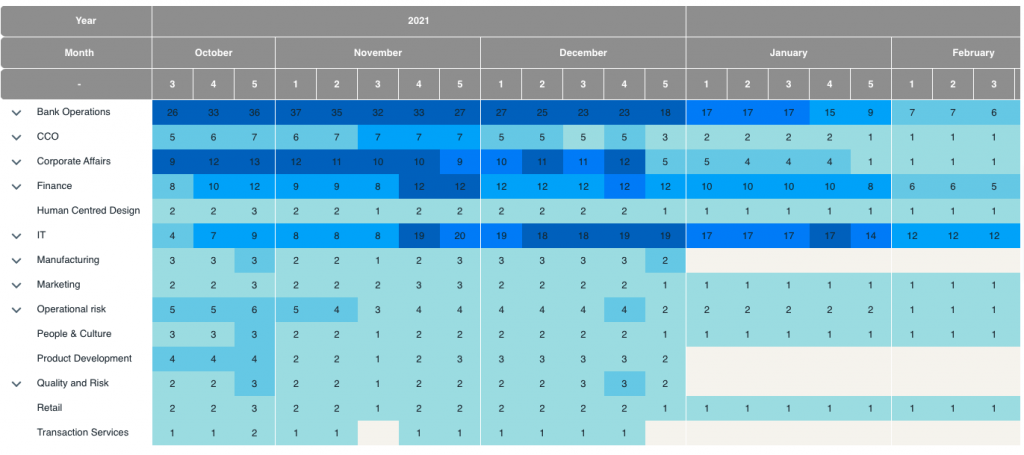
At the lower end of the maturity curve, the Portfolio Change Manager may spend most of the time scoping for change resources, managing delivery, managing change professionals and liaising with key stakeholders. These are absolutely necessary activities. However, to really move up the strategic ladder the Portfolio Change Manager also needs to be able to influence the planning of the initiative portfolio versus only focusing on the delivery end of the curve.
In most organizations the PMO is tasked with managing the initiative investment and planning process. Most would refer to strategic objectives and goals and through this define the overall slate of initiatives for the coming year. Key data used include financial targets, initiative benefits, initiative resourcing and investment cost, and timing. The Portfolio Change Manager is often not involved in this process at all, or best, invited for comments around ‘change saturation’ or ‘change collision’ that are not substantiated by hard data.
To be at the decision table in planning effectively for change, the Portfolio Change Manager needs to be equipped with data to aid insight and decision making. How? By building an integrated view of change impacts. Currently, a lot of organizations still use a series of disjointed spreadsheets to try and articulate the change impacts across initiatives. The problem with this is is that:
To address this problem, The Change Compass is a digital tool designed to make it easier for the Change Portfolio Manager or the PMO to piece together all the change impacts across change initiatives. Each initiative owner inputs change impact data and the system prompts the user to update the data. The interface is intuitive and draws out the impacts step by step. The Portfolio Change Manager and other managers are able to instantly generate various reports. In a nutshell it helps the organization to manage the ‘air traffic control’ of landing initiatives. Moreover, it enables:
To check out our article on how to better manage a change portfolio click here.
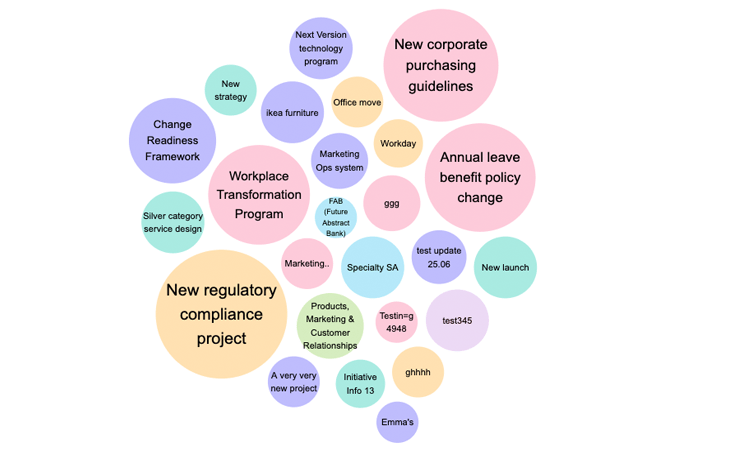
The Portfolio Change Manager should work with the PMO and senior managers to ensure the appropriate governance and routines are designed and set up. To do this, analyse the business requirements in connecting different stakeholder groups to ensure alignment, buy-in, visibility and ownership of the initiative slate. Portfolio change governance bodies should include attendance by PMO, senior business leaders and the Portfolio Change Manager should focus on reporting and tracking on business impacts, business readiness, delivery milestones and delivery risk identification and mitigation.
Typical routines that the Portfolio Change Manager should assist in establishing include:
Whilst change impact data is critical to support the work of change governance bodies, there are other initiative-level metrics that the Portfolio Change Manager needs to be focused on in tracking and reporting. These include:
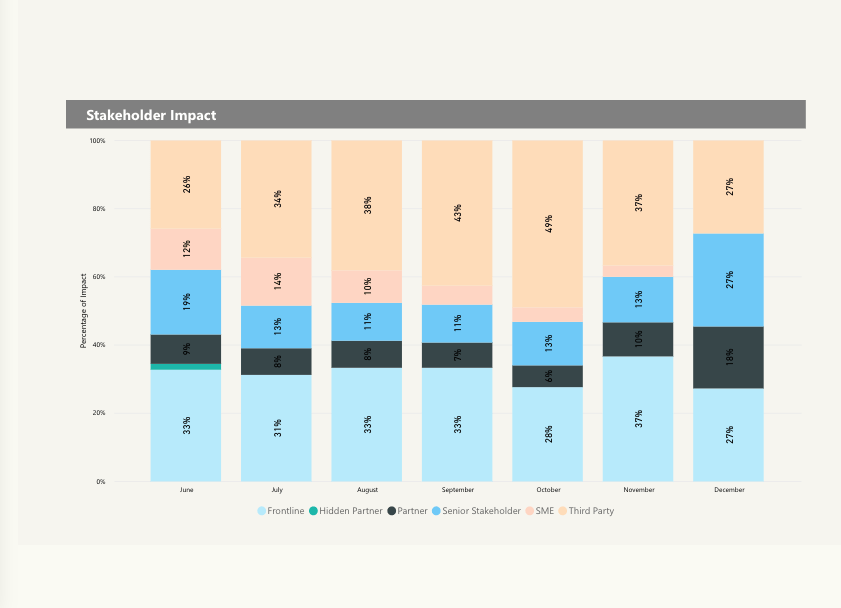
Currently, there is a significant trend of moving towards agile project methodology in most large organizations. This means that there are less focus and reliance on documentation, long planning cycles but more on effective conversations, stakeholder alignment, and constant iteration and learning. On top of this, a lot of organization are also moving toward scaled agile methodology (agile at organizational level vs. within an initiative). The Portfolio Change Manager needs to define key change deliverables and work approaches that suit his/her organization (acknowledging that agile may not suit every organization or every initiative).
Having effective change tools means that the business can self-help and the change practitioner can better coach and develop the business. For the Portfolio Change Manager useful tools may include:
The Portfolio Change Manager is tasked with a complex set of tasks in driving a set of change initiatives for the organization. He/she needs to have the people skills to influence a range of stakeholders to transition to the new state. In addition, the person needs to possess business acumen and analytical skills to support the PMO and senior managers to make the right decisions to drive change across initiatives. Whilst not exhaustive, this guide calls out key critical areas undertaken by the Portfolio Change Manager. To be successful going forward, the Portfolio Change Manager needs to constantly deliver value and provide insight through leveraging digital tools and hard data to be at the decision-making table.
Check out our Ultimate guide to agile for change managers.
———————————————–
If you’ve found this article useful please like this on Linkedin
If you’ve found this article interesting, please ‘like’ and share this with your connections.


Please also check out our ultimate guide to change portfolio management.